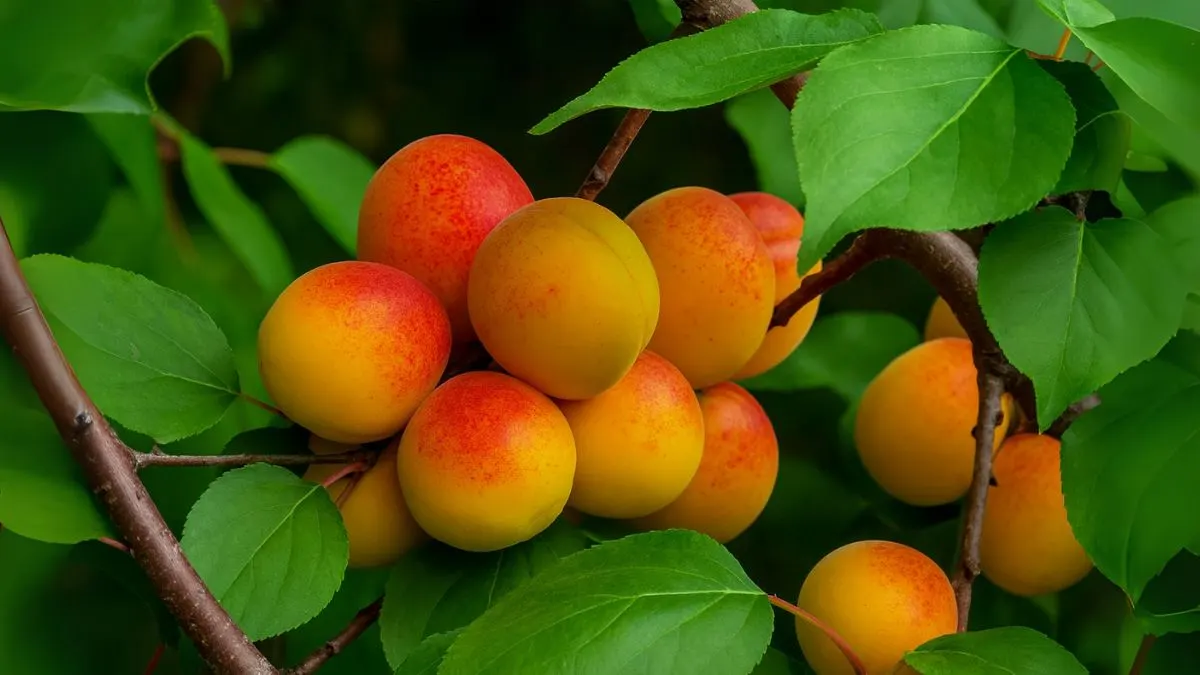Apricot are among the most rewarding fruit trees to grow in a home garden. Their golden-orange fruits are sweet, tangy, and packed with nutrients. Beyond their beauty, they are surprisingly hardy once established. However, to enjoy a bountiful harvest, it’s important to understand their specific growing requirements.
In this guide, I’ll share everything you need to know about planting, watering, and maintaining apricot trees, along with tips I’ve learned from gardening in warm and temperate regions.
Choosing the Right Location

Like most fruit trees, apricots love the sun. To thrive, you should provide your tree with at least 6-8 hours of direct sunlight daily. This ensures healthy growth, strong blossoms, and sweeter fruit.
They also grow them in a warm site, making them perfect for backyards in Canada’s warmer zones and across the USA where summers are long. Cold winters, however, may affect yields, so choose a frost-protected spot if possible.
Soil Requirements
The secret to healthy apricots lies beneath the ground. They enjoy well-drained soil, and excess waterlogging can damage roots. The best choice is well-draining, loamy soil with a pH between 6.0 and 7.5.
Interestingly, the soil you use for planting should be sandy and unfertilized. Unlike many fruit trees, apricot trees do not require fertilisation when planted in the home. Over-fertilizing may even reduce fruit production and lead to excessive leafy growth.
Watering Guidelines
Watering is where many gardeners struggle. The younger trees must be watered in shorter intervals to help them establish strong root systems. Mature trees, on the other hand, need less frequent watering but still benefit from deep, occasional soaks.
Remember, balance is key. Too much water leads to root rot, while too little stunts fruit growth. During hot summers, especially in the USA, I found it helpful to water early mornings to prevent evaporation.
Also Read: How to Grow Plumeria Cuttings Successfully
Planting Apricot Trees
When it comes to planting:
- Choose bare-root trees or healthy potted plants.
- Dig a hole twice as wide as the root ball but not deeper.
- Backfill with native soil instead of enriched compost.
Spacing is also important. Apricots need room to grow, so avoid planting them too close to other trees. Good airflow reduces disease risk and ensures even sunlight exposure.
Pruning and Maintenance
Pruning apricots is essential for fruit production. The goal is to shape the tree into an open vase form so sunlight can reach all branches. Prune during late winter or early spring before new growth appears.
Regular pruning also helps manage height, making harvesting easier. While apricot trees do not require fertilisation when planted in the home, pruning acts as a natural way to redirect energy towards fruiting.
Key Requirements for Growing Apricots
Requirement |
Details |
Sunlight |
6-8 hours of direct sunlight daily |
Soil |
Well-draining, loamy soil, pH 6.0–7.5; sandy and unfertilized |
Watering |
Younger trees must be watered in shorter intervals; mature trees less frequent |
Climate |
Grow them in a warm site, protect from late frosts |
Fertilization |
Apricot trees do not require fertilisation when planted in the home |
Common Challenges
Like all fruit trees, apricots face a few hurdles:
- Frost damage – Blossoms are sensitive to late frosts. Protect trees with covers if a cold snap is expected.
- Pests – Aphids, mites, and borers may attack. Regular inspection keeps problems under control.
- Diseases – Root rot from poor drainage is common, so always plant in well-draining soil.
Also Read: How to Grow and Care for the Syngonium Pink Plant at Home
Personal Experience
When I first planted an apricot tree in my backyard, I made the mistake of enriching the soil heavily with compost. Instead of producing fruit, the tree grew tall with thick foliage but no apricots. Only later did I learn that apricot trees do not require fertilisation when planted in the home.
After adjusting to sandy, less enriched soil and ensuring it got 6-8 hours of direct sunlight daily, my tree started producing golden, juicy apricots within two years.
If you’ve been dreaming of harvesting sweet, golden apricots straight from your garden, now’s the time to start. Plant them in a warm site, give them care, and enjoy years of fruit-laden summers.






